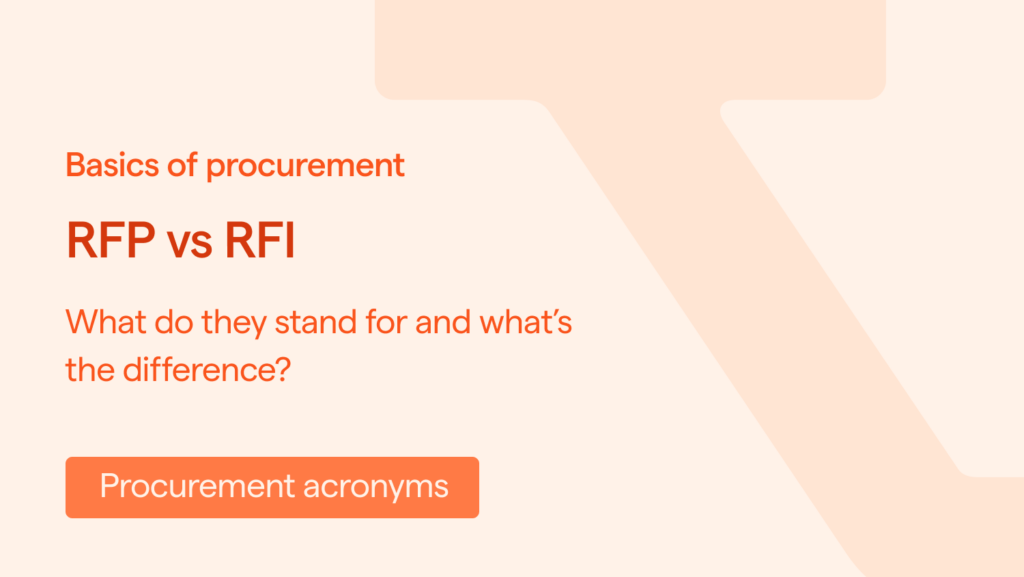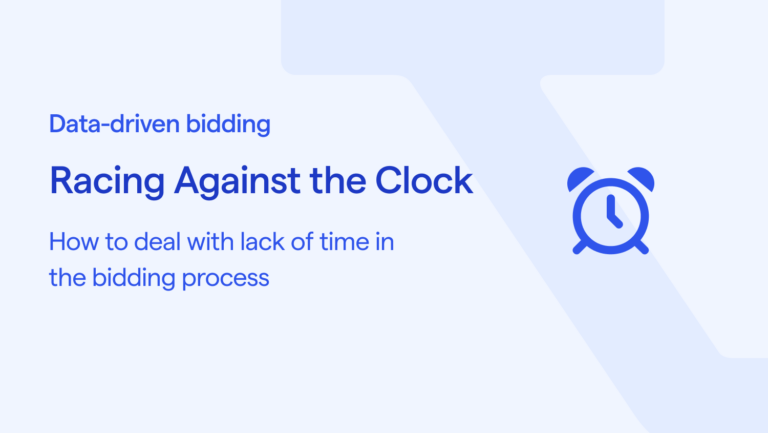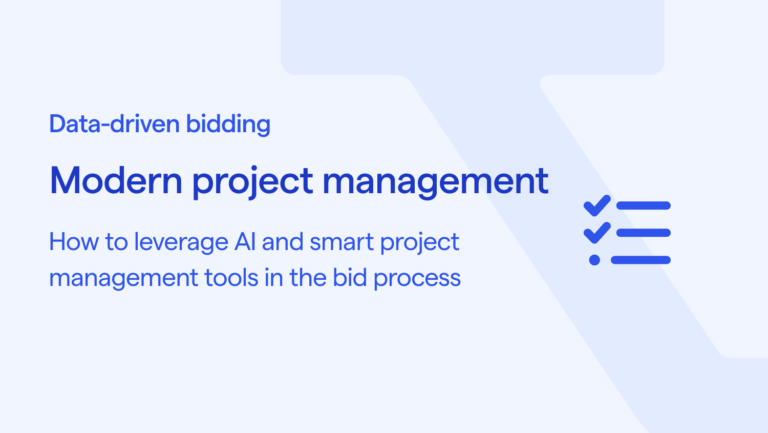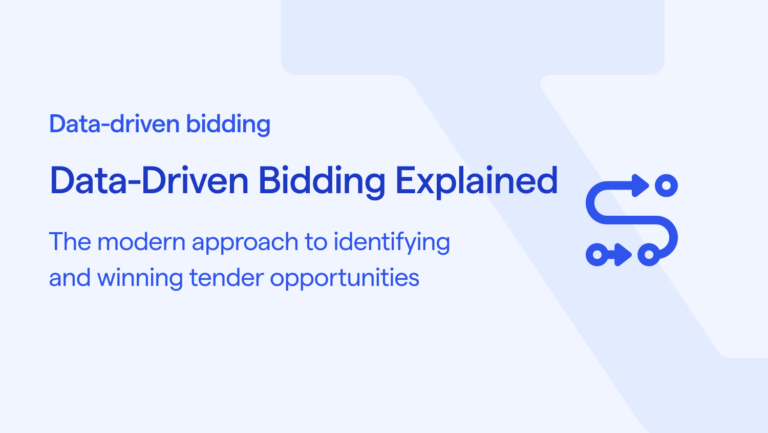The world of public procurement uses a wide range of different acronyms, and procurers will expect that you and your bidding teams will be able to understand these terms and how they differ. Two of the most common acronyms are RFP (Request for Proposal) and RFI (Request for Information).
While both RFPs and RFIs are essential parts of a procurement process, their purposes are entirely different. In this article, we break down the key differences between an RFP and an RFI, and note some of the most important aspects that suppliers should consider when issuing their responses.
What is a Request for Proposal (RFP)?
An RFP is used by businesses and organisations to request particular products or services, and will in near-all cases describe and outline a number of factors relevant to a specific procurement. Most often, an RFP will include a presentation of the procurer and their core business, as well as outlining the procurement’s particular and specific needs in detail.
The depth and complexity of RFPs differ between different procurers and procurement opportunities, and where some might be short, others may seem daunting due to the vast amounts of information being requested of suppliers. The procurer issuing the RFP collects valid responses, and most often reviews these according to an outlined evaluation model in order to determine the best suited supplier to provide the requested products or services.
It is also crucially important that an RFP contains all the relevant information pertaining to the particular procurement opportunity before it is released to potential suppliers. As responses to an RFP form the basis for any offers that a procurer may receive, RFPs must consequently ensure that suppliers are adequately and fully informed of any requirements they must meet.
What is a Request for Information (RFI)?
An RFI is issued by businesses and organisations in order for them to gain a better understanding of the market’s current offering for particular products or services, and to evaluate suppliers’ capabilities. In most instances, procurers issuing an RFI know what gaps their business or operations have, but are yet to conclude on how these gaps are best addressed. The RFI thus primarily serves to gather information from different suppliers for comparative purposes, and to help procurers determine their next steps.
Quite often, a completed RFI process will lead procurers to issue a full RFP, which unlike an RFI, does have the objective of securing a potential purchase. In short, responses to an RFI can often influence any RFP that might come thereafter, and they present an important opportunity for suppliers to highlight their products, services and capabilities for potential buyers.
5 Key differences between RFP and RFI
- RFPs are used to solicit bids, while RFIs are used to gather information.
- RFPs typically introduce the potential buyer, their core business, and provide far more detailed information regarding the buyer’s requirements than RFIs.
- RFIs are used in the initial phase of any procurement process in order for procurers to gain a better understanding of market conditions, whereas RFPs are most commonly used when a procurer has decided upon the scope, purpose and any requirements relating to a future purchase.
- The goal of an RFP is to purchase a product or service, with the end goal of signing a contract between procurer and supplier. However, an RFI will not necessarily become an RFP at a later stage, and buyers are not obligated to issue a subsequent RFP just because they issued an RFI.
- Responding to an RFP usually requires more time and resources, as these most often include far more detailed questions and requirements than what would typically be included in any RFI.
What information is requested in an RFI compared to an RFP?
Since the objective of an RFP differs from an RFI, it’s not surprising that each requests different kinds of information. RFIs will typically see procurers ask that suppliers inform them of their service and product offering, and provide details as to their ability to meet an RFIs’ outlined deliverables or basic requirements.
It is also common, especially in the public sector, that procurers request that suppliers provide their recommendations on how the RFI might be improved, and what kind of information or detail would improve the responses a procurer is expected to receive. As an RFI is used to inform the procurer, suppliers are in most instances expected to introduce their business, provide high-level information, and demonstrate compliance with, or a willingness to comply with the outlined requirements. This can be compared to an RFP, which often requests that suppliers provide detailed specifications, implementation plans, and price indications.
While RFI documents are generally less prescriptive in their requests for information, RFPs and their associated documents are often issued with specific formats or tables which the supplier is expected to fill out and comply with. Edits to these prescriptive guidelines is often strictly prohibited, and may result in a bid being disqualified outright – even if you as a supplier might deem the requirement irrelevant.
RFIs and RFPs in the public vs private sector
Both private and public organisations or companies can issue RFIs or RFPs, and the two processes are commonplace across most industry sectors. In the public sphere, RFPs and RFIs usually include specific regulatory requirements that must be met in order for a supplier to be considered a valid vendor. In addition, it is also common for RFPs and RFIs issued by the public sector to be more extensive in their requests and requirements than compared to opportunities issued by the private sector.
The reasons for this are many, but essentially boil down to the fact that public procurement processes often require a more rigorous competitive bidding process in order to meet legal and/or obligatory regulations. Private companies on the other hand tend to be more flexible in their requirements, and often have fewer regulatory requirements so as to increase the number of eligible bids they receive.
What are the differences when responding to an RFP vs an RFI?
As RFPs and RFIs request different kinds of information, there are a few key differences in how suppliers should approach the two types of opportunities.
Firstly, although RFIs will often phrase their requests to suppliers in similar ways that an RFP would, suppliers are most often not expected to be as detailed in their responses. RFIs are usually far shorter than an RFP, and will request far less information. However, when responding to an RFP, suppliers would instead be better served by providing clear and detailed information that shows how they can meet or comply with each outlined requirement, question or request for specification.
Secondly, RFPs are formal whereas RFIs often allow for a more casual introduction. Therefore, it is essential that suppliers use formal business language when responding to RFPs, and present their responses in a clear and easily understandable manner. Experienced suppliers might also go the extra mile, and tailor their response to match the needs outlined by the procurer as part of the RFP – adding a ‘personal touch’ to an otherwise rather impersonal process. Responses to RFIs, on the other hand, are often casual, and in most cases, suppliers do not run the same risk of being disqualified from the process entirely.
How do the timelines for an RFI and an RFP vary?
While the extent of both RFIs and RFPs vary greatly between each procurement opportunity, a bidding team can expect that it will take less time to complete an RFI than it would an RFP. As bidding processes are equally varied, the resources required to provide valid responses are difficult to estimate, but take note that RFPs may in certain instances require weeks/months of effort, whereas an RFI might instead take only a matter of hours.









